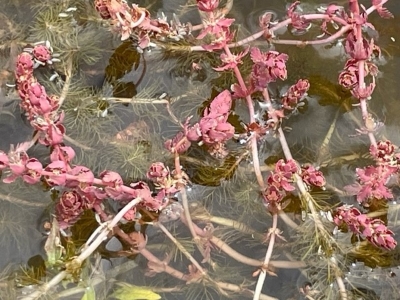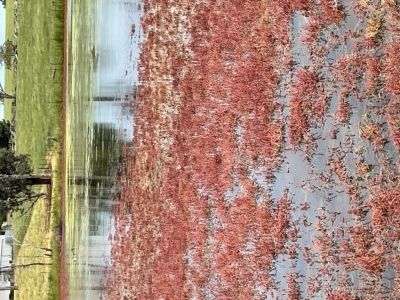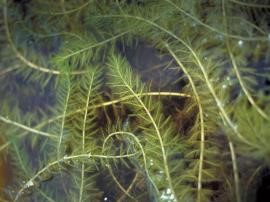Water-milfoil - native or weed?
NRM NEWS – NOVEMBER 2021 – AQUATIC SYSTEMS
By Tara Pitman - Regional Weeds Coordinator
P: 02 6051 2250 | M: 0448 390 288 | E: tara.pitman@lls.nsw.gov.au
With the weather warming up, our aquatic systems look slightly different, with plants surfacing that weren’t observed earlier in the year.
Native aquatic plants provide a food source and habitat for aquatic species and play an essential role in filtering sediment and nutrients in these systems.


Does your dam or waterway look like this with a carpet of red leaves across the surface? It could be red water-milfoil (Myriophyllum verrucosum). This native lives in slow-flowing waters and has leaves with a feather-like appearance and a red flower with four petals.
Unlike native aquatic plants like red water-milfoil, aquatic weeds can negatively impact wetlands and waterways. They can degrade habitat quality, reduce recreational opportunities, alter water quality, block or clog intakes, and water control structures, reduce biodiversity and affect the aquatic food web.
Native and aquatic weeds often have similar features, which makes them hard to identify. For example, Eurasian water-milfoil (Myriophyllum spicatum), also known as spike water-milfoil, has leaves with a feather-like appearance and a pinkish flower.

If you think it’s a weed, please call your local council weeds officer, the NSW Weeds Hotline 1800 680 244 or email weeds@dpi.nsw.gov.au.
For more information on how to identify and control weeds, click here or to access weed resources, click here